In the figure shown all the surface are smooth. All the blocks A B and C are movable x-axis is horizontal and y-axis vertical as shown. Just after the system is released from the position as shown. A Acceleration of A relative to ground is in negative y-directionB Acceleration of A relative to B is in positive x-direction Horizontal Surface C The horizontal acceleration of B relative to ground is in negative x-direction. D The acceleration of B relative to ground directed along the inclined surface of C is greater than gsinθ.
All of these ABCD.
Related Solutions
In the figure shown all the surface are smooth. All the blocks A, B and C are movable, x-axis is horizontal and y-axis verticle as shown. Just after the system is released from the position as shown.
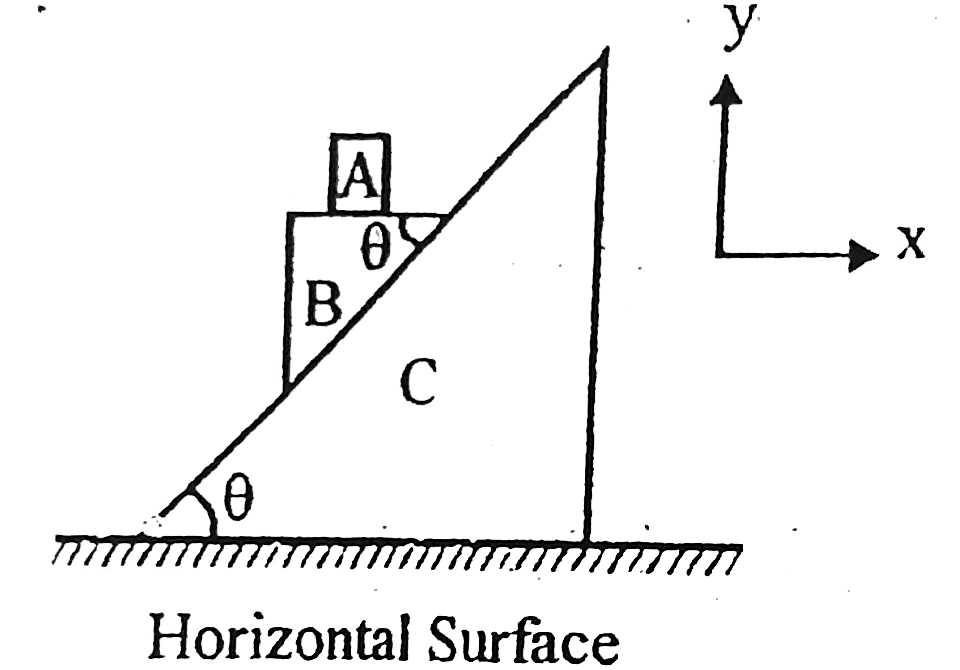
View Solution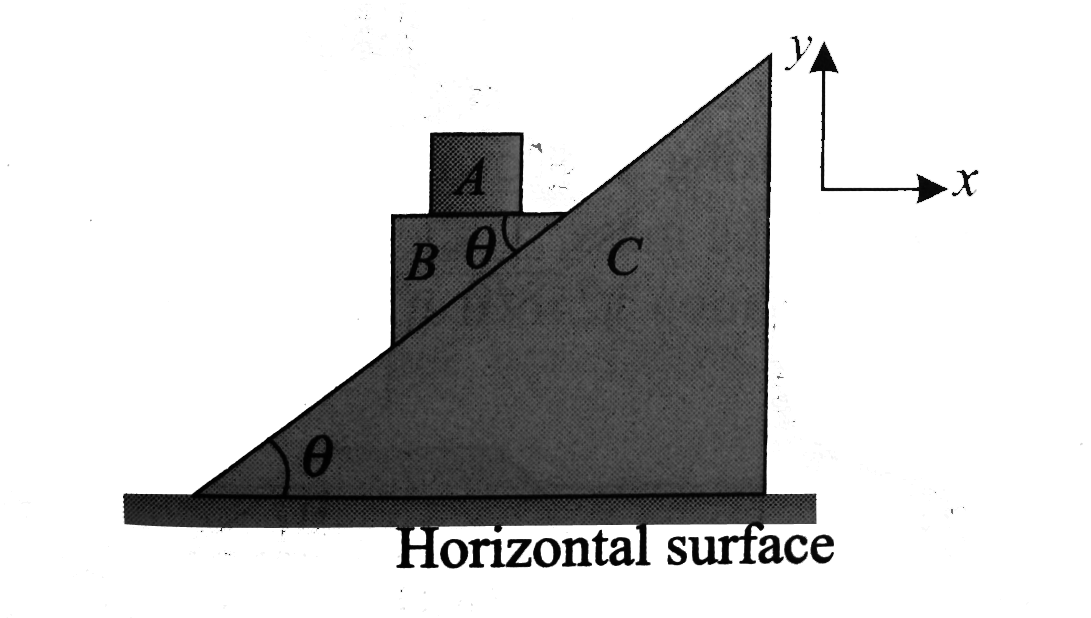
In the figure shown all the surface are smooth. All the blocks A,B and C are movable x-axis is horizontal and y-axis vertical as shown. Just after the system is relased from the position as shown.
View Solution
In the figure shown all the surface are smooth. All the blocks A,B and C are movable x-axis is horizontal and y-axis vertical as shown. Just after the system is relased from the position as shown.
View Solution
In the figure shown all the surface are smooth. All the blocks A,B and C are movable x-axis is horizontal and y-axis vertical as shown. Just after the system is relased from the position as shown.
View Solutionदर्शाये चित्र में सभी सतह चिकनी है। सभी पिंड A, B तथा C गति कर सकते है। x- अक्ष क्षैतिज तथा y-अक्ष दर्शाये अनुसार ऊर्ध्वाधर है । निकाय को दिखाए गयी स्थिति से मुक्त करते है तो इसके तुरंत बाद-
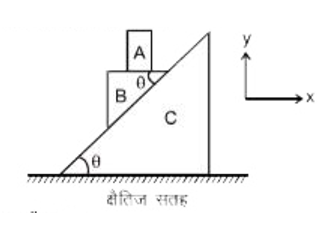
View SolutionFind the acceleration of block B as shown in fig. (a) and (b) relative to block A and relative to ground if block A is moving toward right with acceleration a.
View SolutionFind the acceleration of block B as shown in fig. (a) and (b) relative to block A and relative to ground if block A is moving toward right with acceleration a.
View SolutionAll the surfaces are smooth as shown in figure. The acceleration of mass m relative to wedge is :
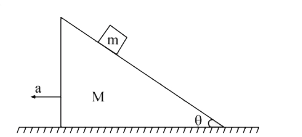
View SolutionAll the surfaces are smooth as shown in figure. The acceleration of mass m relative to wedge is :
View SolutionFind the acceleration of the block B as shown in figure- 1.95 (a) and (b) relative to the block A and relative to ground if the block A is moving toward left with acceleration a.
View SolutionAll surfaces shown in figure are smooth. System is released from rest. x and y comonents of acceleration of COM are

View SolutionAll surfaces shown in figure are smooth. System is released from rest. x and y comonents of acceleration of COM are

View SolutionA rod and a block are of same mass. Initially rod is in horizontal position. What will be acceleration of tip of the rod just after the system is released from this position shown in figure.
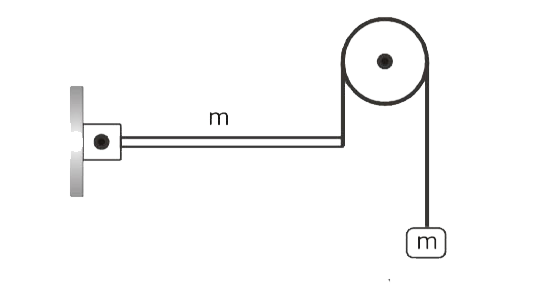
View SolutionIn the arrangement shown, all strings are light and inextensible, pulleys light and smooth. All surfaces are smooth. The block A moves on smooth horizontal surface towards left at a . 12 ms^(-2) The block B always remain in horizontal position. Acceleration block B is
View SolutionIn the diagram shown, the acceleration of the block B as shown in relative to the block A and relative to ground is a_(BA) and a_(BG) respectively. If the block A is moving towards left with an acceleration a_(0) then .
View SolutionA particle is projected in air at some angle to the horizontal, moves along parabola as shown in figure where x and y indicate horizontal and vertical directions, respectively . Shown in the diagram, direction of velocity and acceleration at points A, B and C.
View SolutionA particle is projected in air at some angle to the horizontal, moves along parabola as shown in figure where x and y indicate horizontal and vertical directions, respectively . Shown in the diagram, direction of velocity and acceleration at points A, B and C.
View SolutionIn the figure shown all surfaces are frictionless smooth. If N represents the reaction normal between the block and the plane, then the acceleration of M in the horizontal direction will be.
View SolutionIn the figure shown all the surfaces are smooth and frictionless. If N , represents the reaction normal between the block and the plane, then in the horizontal direction M will have an acceleration of
View SolutionThe system shown in figure starts from rest, and each block moves with a constant acceleration. If the relative acceleration of block C with respect to block B is 6m//s^(2) upward and the relative acceleration of block D with respect to block C after 3s from starts.
View Solution